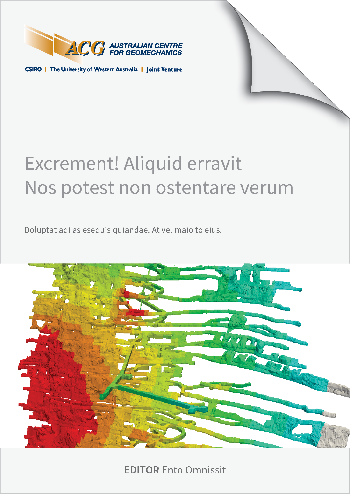Probabilistic development rates: Using data and stochastic modelling to integrate contingency

|
Authors: Hesse, B; Wooders, H; te Kloot, C; Bayanbileg, A |
DOI https://doi.org/10.36487/ACG_repo/2435_A-08
Cite As:
Hesse, B, Wooders, H, te Kloot, C & Bayanbileg, A 2024, 'Probabilistic development rates: Using data and stochastic modelling to integrate contingency ', in Daniel Johansson & Håkan Schunnesson (eds), MassMin 2024: Proceedings of the International Conference & Exhibition on Mass Mining, Luleå University of Technology, Luleå, pp. 84-93, https://doi.org/10.36487/ACG_repo/2435_A-08
Abstract:
Oyu Tolgoi is a block caving mine located in the South Gobi province of Mongolia. In July 2022, underground production commenced and as of December 2022, approximately 101 km of lateral development has been completed and a further 118 km is required to support the greater Hugo North Lift 1 orebody. Historically, life-of-mine scheduling for underground development has been driven by a calibrated first principles build-up for lateral development tasks, where consumable use and equipment performance parameters were used to calculate a task rate and generate deterministic schedule outputs. Contingency was then determined via a risk-ranging process and applied as additional duration following finalisation of the schedule. A project was initiated with the primary purpose to enable fit-for-purpose scheduling rates at each planning horizon. It also aimed to integrate contingency within the schedule. The project specifically focused on lateral development task rates and utilized historical cycle time data to plot a cumulative probability distribution for each lateral development rate, defined by ‘Schedule Profiles’, from which a specific confidence could be drawn. Application of this method also allowed for schedule simplification, reducing the number of Schedule Profiles from over 450 to 30. The methodology was initially validated via a proof-of-concept application to a feasibility study schedule before hand-over to site for implementation within the mine budget scheduling process. The project was able to successfully leverage data analysis to enable a risk-adjusted scheduling process and simplify creation of development task rates across planning horizons.
© Copyright 2025, Australian Centre for Geomechanics (ACG), The University of Western Australia. All rights reserved.
View copyright/legal information
Please direct any queries or error reports to repository-acg@uwa.edu.au
View copyright/legal information
Please direct any queries or error reports to repository-acg@uwa.edu.au